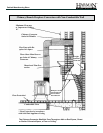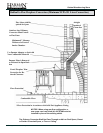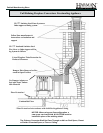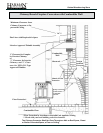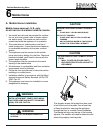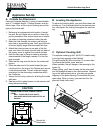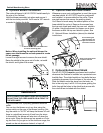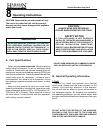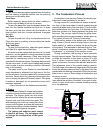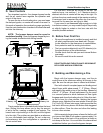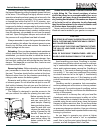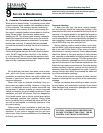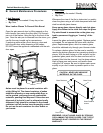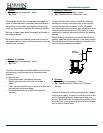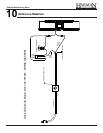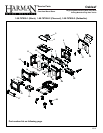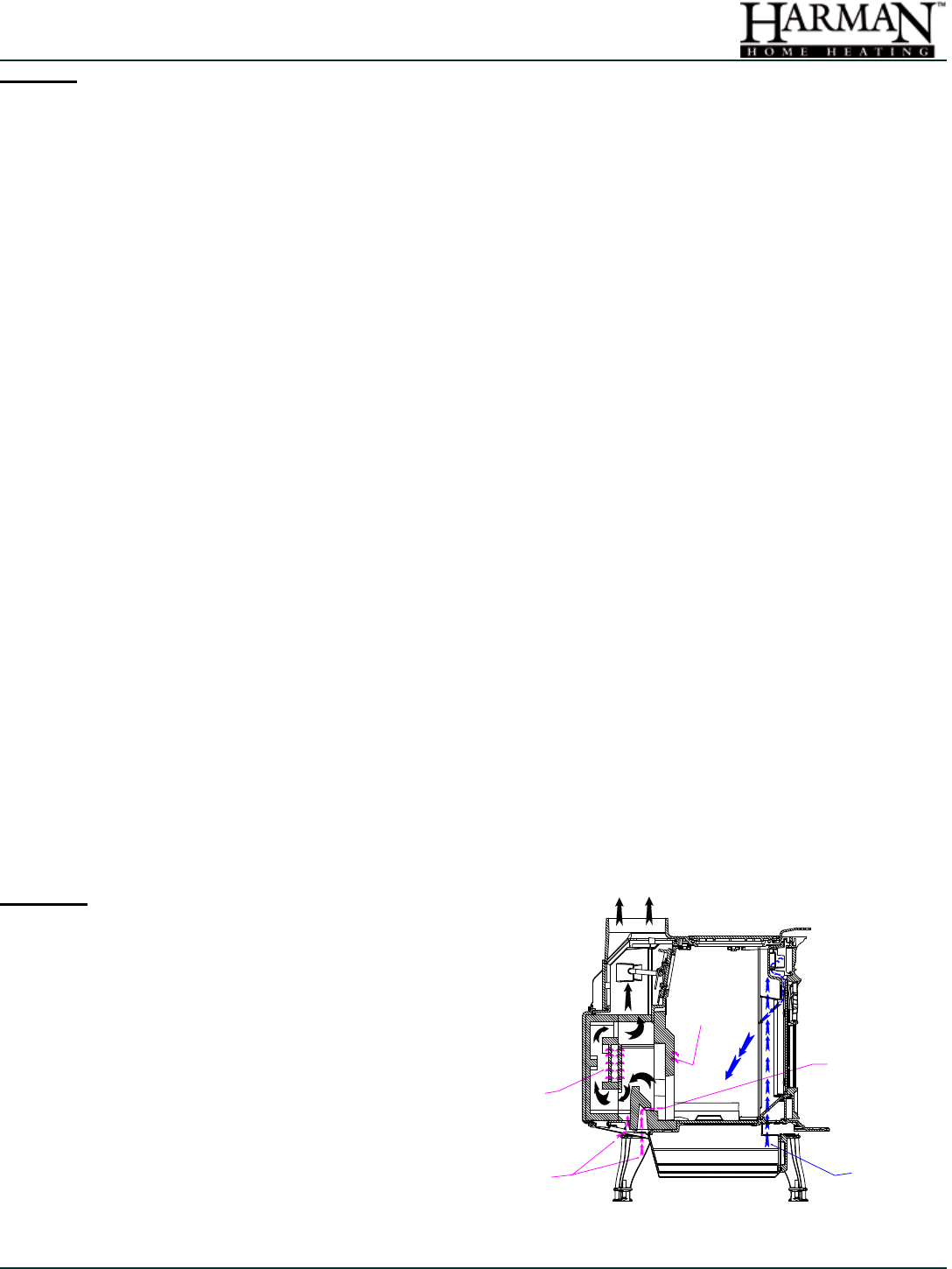
25
Save These Instructions 3-90-798 Dry Seasoned Wood Only!
The Harman Oakleaf's unique grate system
consists of one at bottom grate, and two front
andirons. The bottom grate has slots which
allow the ash to fall into the ash pan by passing
a poker back and forth across the grate. The
andirons keep the fuel from coming into direct
contact with the glass, and keep hot coals and
embers from spilling out while reloading. Never
build a re directly against the glass.
SECONDARY AIR
THRU BRICK
SECONDARY AIR FLOW
SECONDARY AIR ENTERING
EXHAUST STREAM
SECONDARY AIR THRU
RAMP BRICK
EXHAUST STREAM
PRIMARY AIR FLOW
PRIMARY & SECONDARY AIR FLOW
Combustion in the Harman Oakleaf is precisely con-
trolled and is best explained in two parts.
During a wood re, combustion air enters at the bot-
tom front of the stove where it travels upward through
channels at either side of the front door. From the mani-
fold located above the front door, it is directed into the
rebox as a sheet of air owing between the glass and
the wood. This concept helps to keep the glass clean,
while providing the oxygen needed to sustain burning.
This is what is known as "Primary Combustion".
Additional air enters at the bottom rear of the stove
body. Some of this air enters through holes in the rear
bricks where it is used to revitalize the re at the rear
of the rebox. The remainder is delivered into the "Fire-
dome" combustion package where the "Secondary
Combustion", or re-burning of the smoke, occurs.
During combustion, the burning of wood proceeds
through several stages. The initial or evaporation stage
is where the moisture in the wood is driven off in the
form of steam. A second stage is where the volatile
gases contained in the wood are released and burned.
This represents most of the wood's heating capacity.
The nal stage is the charcoal stage where the charcoal
burns the remaining heat content in the wood fuel. Ash
remains after the burning is complete. Within the primary
rebox two or more of these stages of combustion are
occurring at once.
Always be sure to provide adequate ventillation to the
room where the apliance is located, to prevent air star-
vation. In tight construction, consider installing outside
air to the appliance.
Your stove has a large glass-paneled door for loading
and re viewing, a separate smaller door for removing
ashes and a top loading door.
Before opening, always check for wood, embers, or
ash that may be ready to fall out of the door.
To open the glass door, open the bypass damper rst,
then turn the handle clockwise and pull out; to close
the door, push the door closed with the handle in the
open position, then turn, counter-clockwise, to engage
the latch.
To open the ash door, lift up the handle and pull out.
Close the door by pushing in and pushing the handle
all the way down.
To open the top load door, open the bypass damper
and then lift to open the top load door.
All doors must be closed while the stove is in normal
operation, and the gaskets routinely examined for wear
and replaced when necessary. Good door seals are
important for maintaining control of the stove. Never
operate with the ash door open. Operating the stove with
the ash door open, or with a door inadequately sealed,
could create a serious overring condition (discussed
later in this section).
The glass used in your Oakleaf is manufactured to
exact standards to withstand the high heat of the re,
but like all glass, it must be treated with common sense
and care. Never abuse the glass by slamming the door
shut or striking the glass with a heavy object. If the glass
is broken or damaged, do not operate the stove until it
has been replaced
(See instructions in the Maintenance section.)



